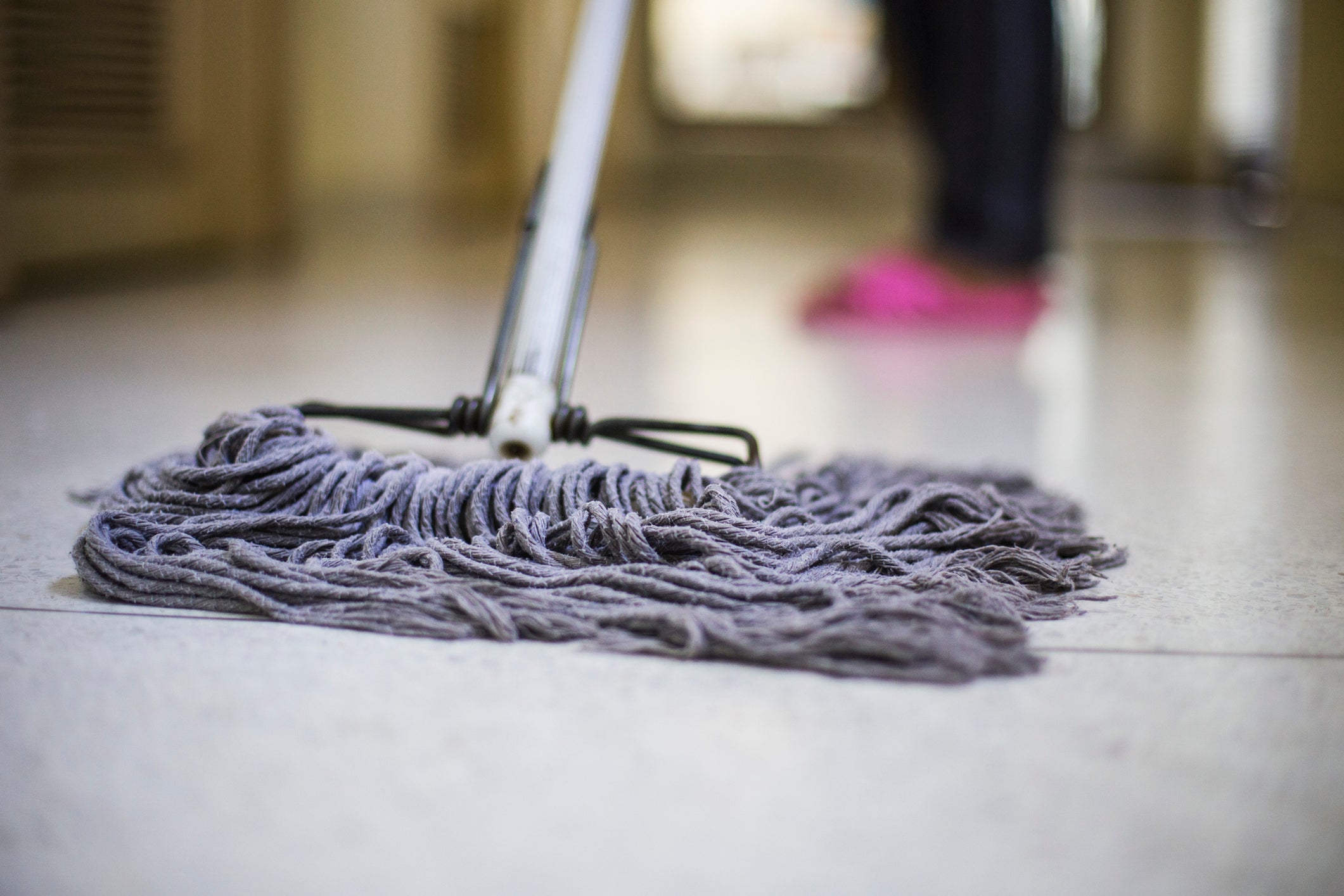You’ve just spilled a glass of red wine on your beautiful faux wood floors. Panic sets in as you envision the stubborn stain permanently marring your home’s décor. You reach for the bleach, a trusty friend in your arsenal of cleaning solutions. But before you douse those faux wood floors, hold on! Using bleach on fake wood floors might seem like a quick fix, but it could be a cleaning disaster waiting to happen.

Image: viewfloor.co
Let’s delve into the world of faux wood floors and bleach, uncovering the truth behind this cleaning dilemma. We’ll explore the composition of these popular flooring choices, the potential hazards of bleach usage, and provide you with safe and effective alternatives for tackling those pesky stains.
Understanding Faux Wood Floors: A World Beyond Real Wood
Faux wood floors, also known as laminate flooring, are a popular choice for homeowners seeking the look and feel of real wood without the hefty price tag. Instead of solid wood planks, laminate flooring consists of several layers pressed together. These layers typically include:
-
Wear Layer: This top layer is the most important, providing durability, scratch resistance, and the visual appeal of wood. It’s often coated with a protective layer, such as melamine or acrylic, that can be susceptible to damage from harsh chemicals like bleach.
-
Decorative Layer: This layer features a photographic image of real wood, creating the illusion of authentic wood grain.
-
Core Layer: The core layer acts as the structural backbone, providing strength and stability. It’s usually made of high-density fiberboard (HDF) or particleboard.
-
Backing Layer: This bottom layer provides moisture resistance and stability.
The Bleach Conundrum: A Harsh Reality for Faux Wood
While bleach is a powerful disinfectant, it’s not a universal cleaning solution. Its aggressive nature can wreak havoc on your faux wood floors, leaving behind irreversible damage. Here’s why bleach is a no-go for your fake wood:
-
Stripping the Wear Layer: Bleach can strip away the protective coating on the wear layer, leaving the floor vulnerable to scratches, stains, and fading.
-
Discoloration and Damage: The bleach can react with the decorative layer, leading to discoloration, unevenness, and irreversible damage to the wood grain pattern.
-
Weakening the Core: The bleach can seep into the core layer, potentially weakening the structural integrity of the laminate.
-
Exposure to Harmful Chemicals: The fumes released from bleach can be harmful to your health, especially when used in enclosed spaces.
Alternatives to Bleach: Safe Cleaning Solutions for Faux Wood Floors
Fear not! There are plenty of safe and effective alternatives to bleach for cleaning your faux wood floors.
-
Mild Detergent: A simple mixture of warm water and a mild dish soap, such as Dawn, can effectively remove most spills and dirt without harming the floor.
-
Vinegar: Vinegar is a natural disinfectant and cleaner that can tackle sticky messes and remove odors. Dilute white vinegar with water (generally a 1:1 ratio) and apply with a damp cloth.
-
Baking Soda: Baking soda is a mild abrasive that can effectively scrub away stains. Create a paste by mixing baking soda with a little water and apply it to the affected area.
-
Commercial Cleaners: Look for specific cleaner designed for laminate flooring. These cleaners are formulated to be safe and effective on faux wood surfaces.
-
Microfiber Cloth: Don’t underestimate the power of a microfiber cloth! Regularly dust or mop your faux wood floors with a microfiber cloth to remove dirt and debris and prevent the build-up of grime.

Image: coretecfloors.art
Expert Insights: Tips for Maintaining Your Faux Wood Floors
For the best care and longest lifespan of your faux wood floors, follow these expert-backed tips:
-
Always follow the manufacturer’s cleaning instructions: Your flooring’s specific care and maintenance recommendations are documented by the manufacturer. Adhering to these instructions will ensure that you’re using the right cleaning solutions and techniques for your particular floors.
-
Regular Cleaning is Key: Frequent sweeping or vacuuming with a brush attachment will remove dust and dirt before they can scratch or damage the floor’s surface.
-
Mop with Care: When mopping, use a damp, not soaking wet, mop and a cleaner specifically designed for laminate flooring. Avoid harsh chemicals or cleaners that contain ammonia or alcohol.
-
Use Floor Mats: Place mats at entryways and in high-traffic areas to prevent dirt and debris from damaging the floor’s surface.
-
Protect Against Water Damage: Avoid excessive water exposure to your faux wood floors. If spills occur, wipe them up immediately and avoid letting water sit on the surface.
Can You Use Bleach On Fake Wood Floors
Conclusion: The Power of a Safe and Informed Approach
Using bleach on faux wood floors is a cleaning method best avoided. Understanding the unique composition of these floors and the potential hazards of harsh chemicals will help you make informed cleaning decisions. By prioritizing safe, alternative cleaning solutions and following expert advice for maintaining your faux wood floors, you can preserve their beauty and durability for years to come. Remember, when it comes to your beautiful faux wood floors, a little knowledge goes a long way!






